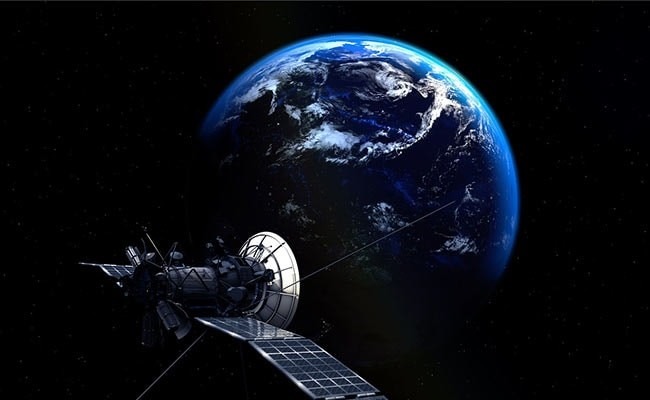| Translate This News In |
|---|
After a ten-year pause, Russia is resuming its ambitious attempt to dominate the world’s burgeoning space tourism business, competing with zealous billionaires, the US, and rising China.
This month, Russia made a splash by sending two cosmic adventurers to the International Space Station (ISS) for the first time in 12 years: Japanese businessman Yusaku Maezawa and his assistant.
Dmitry Rogozin, Russia’s fiery space chief, talked about the country’s next steps to domination, including an unique module for Russian visitors on the International Space Station, spacewalks outside the station, and — further down the road — journeys around the moon.
“The Americans will not be given this niche.” At a press conference while Maezawa was blasting towards the ISS on a 12-day mission, he informed reporters, “We are ready to fight for it.”
However, since it was last in the game a decade ago, Russia’s path to industry domination has been strewn with fresh stumbling blocks.
Roscosmos, the Russian space agency, had a monopoly on sending the cash-strapped curious to space at the time.
That changed in 2011, when NASA decommissioned its own space shuttle for astronauts and grabbed up every seat on the International Space Station Roscosmos had available for the following decade.
After entrepreneur Elon Musk’s SpaceX launched its first successful ISS flight last year, NASA ditched Roscosmos.
This was a tremendous financial blow to the cash-strapped Russian space agency, which has been struck by budget cuts and corruption scandals at the same time.
Roscosmos, according to analysts, has little choice but to rely on tourists to make up the difference.
According to industry analyst Vitaly Yegorov, “the Russian space sector is based on consistent orders for these launches.”
He claims that the cost of creating the three-person Soyuz spacecraft to transport the crew is covered by the price of one seat, which is expected to be $50-60 million, while a second traveller makes a profit.
Officials claim, however, that space tourism is about more than money.
“It is a matter of national honour.” It increases interest in manned spaceflight among young people. After all, it is the future,” Dmitry Loskutov, the head of Glavkosmos, a Roscosmos subsidiary in charge of commercial ventures, including tourism, argues.
The competition is escalating.
The only countries capable of manned missions are Russia, China, and the United States, but a bevvy of newcomers, including SpaceX, are pressing Russia to boost its game.
Musk has yet to bring passengers to the ISS, but his Inspiration4 spacecraft just completed a three-day voyage into Earth’s orbit with an all-civilian crew.
Amazon founder Jeff Bezos’ Blue Origin and billionaire Richard Branson’s Virgin Galactic are also interested in a piece of the pie.
This year, both of their spacecraft successfully completed their inaugural trips, spending several minutes in zero gravity before returning to Earth.
The Russian Academy of Cosmonautics’ Andrei Ionin, however, believes that the billionaires’ quick, low-orbit flights cannot be compared to a days-long voyage to the ISS.
He compared the Ferrari and Renault markets, saying, “It is like comparing Ferrari and Renault markets.”
Loskutov agreed, noting that the missions were more akin to “entertainment” than space travel.
“Competition is heating up,” Yegorov added, referring to SpaceX in particular.
Russia is aware of this. Loskutov said the company intends to expand its offerings, which may include a spacewalk on a future tourist mission.
With the ISS due to retire in the next decade, Moscow has also revealed plans for its own orbital station, with Rogozin speculating on the inclusion of a “separate tourist module.”
He proposed new paths, such as those taken by Soviet cosmonaut Yuri Gagarin, the first human in space.
Russia poses ‘no threat.’
Rogozin has also stated that Roscosmos hopes to provide a tour around the moon beyond 2030.
However, that timescale falls well short of SpaceX’s goals, which include a mission to send eight people around the moon as soon as 2023.
Another challenge in the area for Roscosmos is determining and meeting demand.
For one thing, Soyuz spacecraft are expensive, and planning a mission takes at least two years.
Russia has pre-ordered a rocket for the next mission, according to Loskutov, and Rogozin has directed his agency to increase Soyuz production.
It is also difficult to gauge true demand, not just interest.
Candidates must be willing to pay a large sum of money, meet health standards, and commit to months of training and a period of recovery after returning to Earth.
“There are not many people, in my perspective — but you do not need many,” Ionin added.
He claimed that, for the time being, Russia is ahead thanks to the Soviet-designed and time-tested Soyuz spacecraft.
“There is no threat to Roscosmos’ business for the next five to ten years,” Ionin stressed.


















